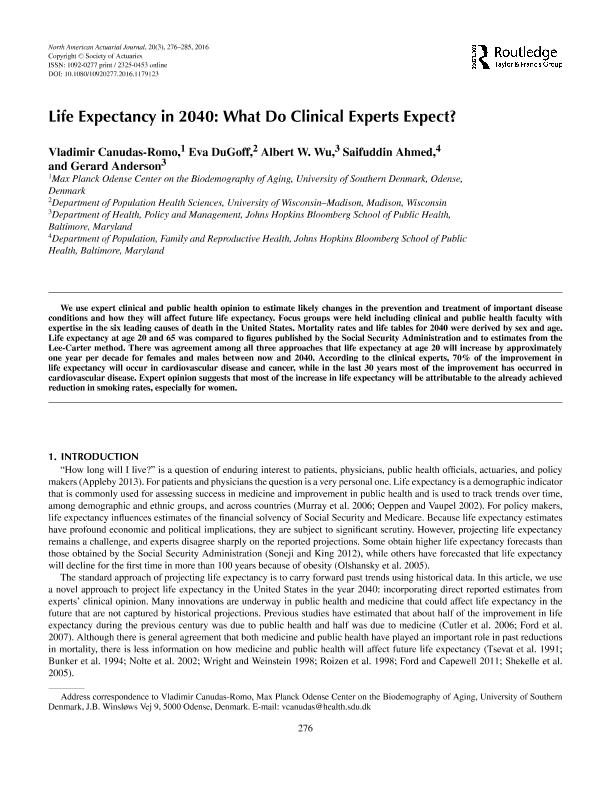Life expectancy in 2040 : what do clinical experts expect?

Contenido multimedia no disponible por derechos de autor o por acceso restringido. Contacte con la institución para más información.
| Tag | 1 | 2 | Value |
|---|---|---|---|
| LDR | 00000cab a2200000 4500 | ||
| 001 | MAP20160034189 | ||
| 003 | MAP | ||
| 005 | 20161123173450.0 | ||
| 008 | 161117e20160905usa|||p |0|||b|eng d | ||
| 040 | $aMAP$bspa$dMAP | ||
| 084 | $a6 | ||
| 245 | 1 | 0 | $aLife expectancy in 2040$b: what do clinical experts expect?$cVladimir Canudas-Romo... [et al.] |
| 520 | $aWe use expert clinical and public health opinion to estimate likely changes in the prevention and treatment of important disease conditions and how they will affect future life expectancy. Focus groups were held including clinical and public health faculty with expertise in the six leading causes of death in the United States. Mortality rates and life tables for 2040 were derived by sex and age. Life expectancy at age 20 and 65 was compared to figures published by the Social Security Administration and to estimates from the Lee-Carter method. There was agreement among all three approaches that life expectancy at age 20 will increase by approximately one year per decade for females and males between now and 2040. According to the clinical experts, 70% of the improvement in life expectancy will occur in cardiovascular disease and cancer, while in the last 30 years most of the improvement has occurred in cardiovascular disease. Expert opinion suggests that most of the increase in life expectancy will be attributable to the already achieved reduction in smoking rates, especially for women. | ||
| 650 | 4 | $0MAPA20080579258$aCálculo actuarial | |
| 650 | 4 | $0MAPA20080602192$aInvestigación clínica | |
| 650 | 4 | $0MAPA20090007925$aOpinión pública | |
| 650 | 4 | $0MAPA20080580377$aEsperanza de vida | |
| 650 | 4 | $0MAPA20080555306$aMortalidad | |
| 651 | 1 | $0MAPA20080638337$aEstados Unidos | |
| 700 | 1 | $0MAPA20160014174$aCanudas-Romo, Vladimir | |
| 773 | 0 | $wMAP20077000239$tNorth American actuarial journal$dSchaumburg : Society of Actuaries, 1997-$x1092-0277$g05/09/2016 Tomo 20 Número 3 - 2016 , p. 276-285 |

